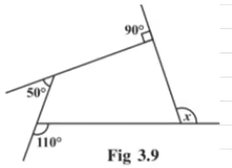Time for 20 oscillations of a pendulum is measured as t1=39.6s,t2=39.9s,t3=39.5. What is the precision in the measurements ? What is the accuracy of the measurement ?
To solve the problem, we will follow these steps:
Step 1: Calculate the Precision
Precision is defined as the smallest unit of measurement that can be reliably read from the measuring instrument. In this case, we can determine the precision by looking at the readings.
Given Readings:
- t1=39.6s
- t2=39.9s
- t3=39.5s
The smallest increment between the readings is 0.1s (for example, from 39.6 to 39.7). Thus, the precision of the measurements is:
Precision=0.1s
Step 2: Calculate the Mean Value of the Measurements
Next, we calculate the mean (average) of the three measurements to find the central tendency.
Tmean=t1+t2+t33=39.6+39.9+39.53
Calculating this gives:
Tmean=119.03=39.7s
Step 3: Calculate the Absolute Errors
Now, we will find the absolute errors for each measurement by subtracting the mean value from each individual measurement.
1. For t1:
Absolute Error1=|t1−Tmean|=|39.6−39.7|=0.1s
2. For t2:
Absolute Error2=|t2−Tmean|=|39.9−39.7|=0.2s
3. For t3:
Absolute Error3=|t3−Tmean|=|39.5−39.7|=0.2s
Step 4: Calculate the Mean Absolute Error
Now, we find the mean of these absolute errors to determine the accuracy.
Mean Absolute Error=Absolute Error1+Absolute Error2+Absolute Error33=0.1+0.2+0.23
Calculating this gives:
Mean Absolute Error=0.53≈0.1667s
Step 5: Round the Mean Absolute Error
Since the precision of our measurements is 0.1s, we round the mean absolute error to one decimal place:
Mean Absolute Error≈0.2s
Final Results
- Precision: 0.1s
- Accuracy: ±0.2s
Precision is defined as the smallest unit of measurement that can be reliably read from the measuring instrument. In this case, we can determine the precision by looking at the readings.
- t1=39.6s
- t2=39.9s
- t3=39.5s
Next, we calculate the mean (average) of the three measurements to find the central tendency.
Now, we will find the absolute errors for each measurement by subtracting the mean value from each individual measurement.
Absolute Error1=|t1−Tmean|=|39.6−39.7|=0.1s
Absolute Error2=|t2−Tmean|=|39.9−39.7|=0.2s
Absolute Error3=|t3−Tmean|=|39.5−39.7|=0.2s
Now, we find the mean of these absolute errors to determine the accuracy.
Since the precision of our measurements is 0.1s, we round the mean absolute error to one decimal place:
- Precision: 0.1s
- Accuracy: ±0.2s
Topper's Solved these Questions
- BOOK - PRADEEPCHAPTER - PHYSICAL WORLD AND MEASUREMENTEXERCISE - Shor Answer Question 3 marks6videos
PHYSICAL WORLD AND MEASUREMENT
- BOOK - PRADEEPCHAPTER - PHYSICAL WORLD AND MEASUREMENTEXERCISE - Long Answer Question 5 marks2videos
PHYSICAL WORLD AND MEASUREMENT
- BOOK - PRADEEPCHAPTER - PHYSICAL WORLD AND MEASUREMENTEXERCISE - Short Answer Question 2 marks8videos
PHYSICAL WORLD AND MEASUREMENT
- BOOK - PRADEEPCHAPTER - OSCILLATIONS AND WAVESEXERCISE - multiple choice Questions13videos
OSCILLATIONS AND WAVES
- BOOK - PRADEEPCHAPTER - PROPERTIES OF BULK MATTEREXERCISE - Multiple choice questions7videos
PROPERTIES OF BULK MATTER
Similar Questions
Knowledge Check
- Question 1 - Select One
If the time period of oscillation of a pendulum is measured as 2.5 second using a stop watch with the least count 12 second, then the permissible error in the measurement is
A10%B30%C15%D20% - Question 2 - Select One
A student measures time for 20 oscillations of a simple pendulum as 30s, 32s, 35s and 31s. If the minimum division in the measuring clock is 1s, then correct meant time in second is
A32±3B32±1C32±2D32±5 - Question 3 - Select One
The least count of a stop watch is (1/5)s. The time 20 oscillations of a pendulum is measured to be 25s. The maximum percentage error in this measurement is
A8%B1%C0.8%D16%
The least count of a stop watch is 0.2 second. The time of 20 oscillations of a pendulum is measured to be 25 seconds. The maximum percentage error in this measurement is found to be 0.x%. What is the value of x?
View SolutionThe period of oscillation of a simple pendulum is T=2π√L/g. Measured value of L is 20.0cm known to 1mm accuracy and time for 100 oscillations of the pendulum is found to be 90 s using a wrist watch of 1 s resolution. What is the accuracy in the determination of g?
View SolutionThe time period of oscillation of simple pendulum is given by t=2π√I/g What is the accurancy in the determination of 'g' if 10cm length is knownj to 1mm accuracy and 0.5 s time period is measured form time of 100 oscillations with a wastch of 1 sec. resolution.
View SolutionThe time period of a simple pendulum is given by T=2π√lg . The measured value of the length of pendulum is 10 cm known to a 1 mm accuracy. The time for 200 oscillations of the pendulum is found to be 100 second using a clock of 1 s resolution. The percentage accuracy in the determination of 'g' using this pendulum is 'x'. The value of 'x' to the nearest integer is,
View SolutionThe least count of a stop watch is 0.2 s, The time of 20 oscillations of a pendulum is measured to be 25s. The percentage error in the time period is
View Solution


